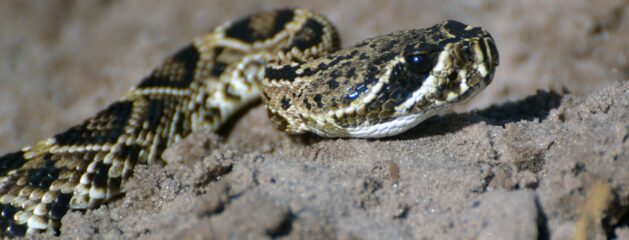How could these amazing (seemingly designed) features have evolved?
Plus fun facts – see below!
Challenge: What sort of sophisticated equipment and technology would you need to create a sensitive thermal imaging system? Now think about this:
Copperheads are pit vipers, like rattlesnakes and water moccasins. Pit vipers have “heat-sensory pits between eye and nostril on each side of head,” which are able to detect minute differences in temperatures so that the snakes can accurately strike the source of heat, which is often potential prey.”
Then how could they have evolved the following skill?
“After mating in the spring, females will give birth to “from two to 18 live young in late summer or fall,” said Beane. According to The Maryland Zoo, after mating in the fall, the female will store sperm and defer fertilization for months, until she has finished hibernating.”
Then think about this: how did it develop it’s complex venom?
In fact, “scientists have found that a chemical in copperhead venom may be helpful in stopping the growth of cancerous tumors.”
And lastly, here are a few fun facts:
“When touched, copperheads sometimes emit a musk that smells like cucumbers.”
“The penny is sometimes called a copperhead.
Northern Democrats who opposed the U.S. Civil War were called Copperheads, according to the Journal of the Abraham Lincoln Association.”
See more here: https://vervetimes.com/copperhead-snakes-facts-bites-babies/
Picture from: https://pixabay.com/photos/copperhead-florida-snake-reptile-4306594/ accessed 1/6/23.


